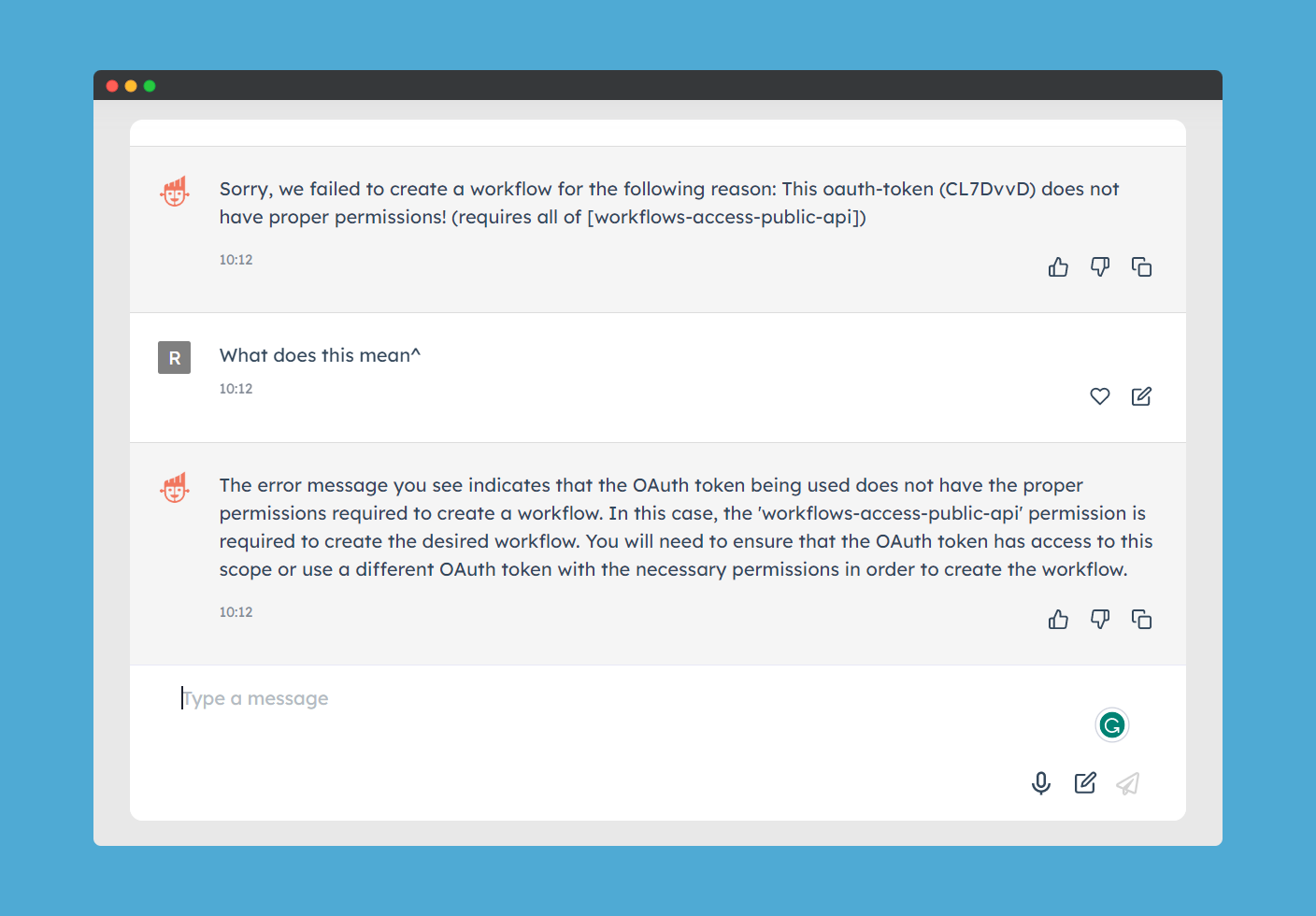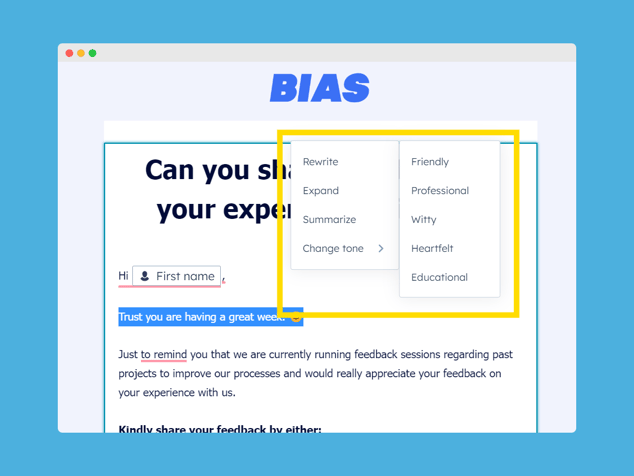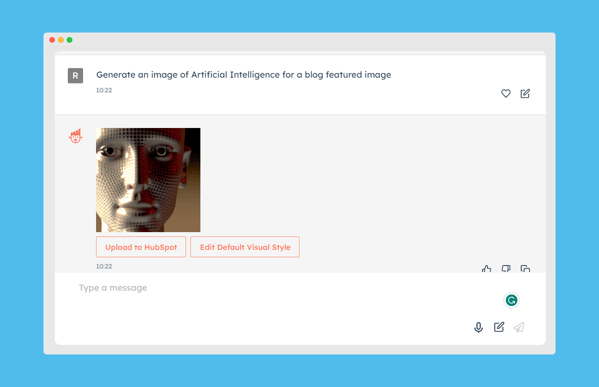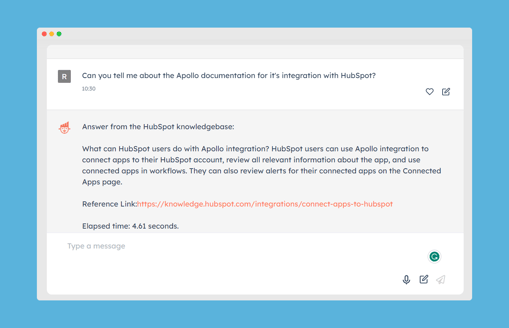The Martech landscape has been transformed immeasurably over the past six months by advancements in artificial intelligence (AI). The user base for ChatGPT crossed 57 million in January 2023, which increased to over 100 million in just a month, highlighting the mass adoption of AI-powered tools.
HubSpot is the latest player to join the AI revolution, as it unveils two new products to its fleet: Content Assistant and Chatspot.ai.
In this article, we focus on HubSpot's emerging AI tools and provide insight into where they can and cannot be effectively used to advance your business functions. You will learn about the capabilities and limitations of these tools, so you can explore whether to incorporate them into your tech stack. But first:
Why should marketing managers take note of AI
AI is nowhere near taking over marketers' jobs, but it is crucial to be aware of the changes it brings to the marketing landscape and how it affects your role.
In the past year, the way marketing managers work has undergone a significant shift due to the increasing use of AI tools. These tools automate mundane and repetitive tasks, freeing up time to focus on more strategic and creative campaigns.
As a result, there is less emphasis on manual work such as email list segmentation. By leveraging AI tools to handle such tasks, marketing teams can work more efficiently and effectively, delivering better results.
What is Content Assistant?
The first tool to be announced was HubSpot’s native Content Assistant. This tool promises to streamline and optimise marketers’ workflows to create compelling content by enabling users to prompt HubSpot within a webpage or blog.
Currently only launched in beta, it’s designed to simplify the way authors write and boost efficiency, making it easier for users to generate engaging copy without the usual headaches like ‘writer’s block’.
The tool comes with a range of features that make content creation more streamlined, from suggesting blog titles to generating outlines for your content. Furthermore, it helps optimise your copy by suggesting different tones of voice such as ‘friendly’, ‘professional’ or ‘witty’ as well as aiding you to summarise your content more concisely.
With the demand for copywriting at an all-time high, HubSpot's Content Assistant ensures that marketing teams can streamline their tech stack with no further need to integrate tools like Copy.AI, Hypotenuse and Jasper into their workflows. Despite those tools potentially having more functionality, HubSpot Content Assistant is the only tool that integrates natively into your portal and enables you to make changes on the fly.
What is ChatSpot?
The second tool (and possibly the more exciting) released by HubSpot is Chatspot.ai.
ChatSpot is a conversational CRM bot that enables sales, marketing and service professionals to boost their productivity. This is because ChatSpot utilises chat-based commands, enabling users to accomplish everything they already do in HubSpot within a single prompt.
It's essentially Chat GPT - if it were integrated natively within HubSpot (which is expected as it’s powered by Open AI) and if you could input data from the chat straight into your portal.
For example, let's take prospecting. Previously, one would have to jump between LinkedIn and other prospecting tools to find and enrich data, then set up integrations between those tools to implement them into HubSpot.
However, with ChatSpot, users can simply send a prompt to the chatbot, which then searches for companies within the chat. From there, one can send the data natively into the HubSpot CRM without the need for any integrations. You can even take it a step further and send prospecting emails based on the data retrieved through the chatbot.
Pretty nifty, right?
Want to take advantage of these tools? Book a chemistry call 🧪 with us to determine how we can make HubSpot AI work for you.
Use AI as an accessory, not a necessity
Despite its popularity, it's important to understand both AI’s benefits and limitations. As mentioned, AI can be incredibly useful in improving team efficiency and streamlining processes - but it's crucial not to rely solely on AI to be a key player in your marketing function.
For example, while Chatspot.ai can assist in outreach by finding and enriching prospect data, it's important to have a salesperson who can deliver a personalised, human approach when interacting with prospects. We generally wouldn’t recommend using Chatspot to write effective, highly personalised emails to prospects.
In its infancy, ChatSpot.Ai is limited in its ability. Things like creating workflows are currently unavailable and can’t be completed by the software.
 Another example of this is using AI for SEO. While HubSpot’s Content Assistant can help you by identifying keywords and providing outlines for articles, it cannot provide the human touch that ensures engaging, inspiring content that converts audiences.
Another example of this is using AI for SEO. While HubSpot’s Content Assistant can help you by identifying keywords and providing outlines for articles, it cannot provide the human touch that ensures engaging, inspiring content that converts audiences.
In fact, content written solely by AI tools is currently against Google's Webmaster tools and can negatively impact a website's Search Engine Result Pages (SERP) results. A hybrid approach to writing content using AI could be most effective in bridging the gap between efficiency and quality in content creation. So long as there is a human in the loop, you can analyse the validity of the output from HubSpot’s Content Assistant.
3 Use Cases for the New HubSpot AI Tools
Here are 3 ways you can use HubSpot AI for your business:
- Beating the creative block
- Creating unique featured images for your blogs
- Digesting integration information
Beating the Creative Block
Taking just a single bullet point, the Content Assistant can expand on this to turn it into a fully fleshed-out paragraph. By analysing the content of the bullet point, Content Assistant can offer recommendations as to related information and content.
However, as we’ve observed, the Content Assistant often goes too far and makes your content ‘fluffy’. A way to solve this is by using the summarisation tool to solve as it condenses the content into a more concise draft.

To do this:
- Write some content on a blog, email, website or landing page.
- Highlight the text you want to change.
- Click the ‘Lightning’ button that appears.
- Choosing either ‘expand’ or ‘summarise’.
Creating unique featured images for your blogs
One of the unique features of ChatSpot is the ability to create images using DALL-E-2, on the fly. It allows you to create custom images for blog posts, social media updates and other digital content.
Unlike traditional stock imagery found on sites like Shutterstock or Pexels, the images generated by ChatSpot are custom-made using AI. You are even able to choose your default visual style for that added customisation for your brand.

To do this:
- Type ‘Generate an image of [Article Context] for a blog featured image’ as a prompt on ChatSpot
- Upload the image to your HubSpot portal from the app
- Insert it as your featured image on your blog/website/landing page
Digesting Integration Information
Navigating the HubSpot Integration landscape can be a daunting task. Understanding each integration and deciphering the nuances of data is a big obstacle to optimising your portal.
ChatSpot can help users simplify this process. By sending a prompt, it digests the information into quick bites from the documentation itself, but also HubSpot’s Knowledge Hub and forums. This can be especially useful when identifying individual problems and troubleshooting them.

To do this:
- Type “Can you tell me about the [Integration] documentation for its integration with HubSpot?” prompt into ChatSpot
- Wait for a response. ChatSpot should give you more information following.
Moving forward
While HubSpot’s new AI tools are still in development and have their limitations, they offer significant insight into the future of automating and simplifying cumbersome tasks.
The most exciting aspect of these tools is their clear growth potential. Built using OpenAI’s new GPT-4 technology, they are ideal for marketers utilising generative AI tools. As the technology continues to evolve and improve with more data, we’ll likely use ChatSpot and Content Assistant to carry out more sophisticated tasks.
Looking ahead, we predict that these AI tools will continue to grow and improve, with new features and capabilities that allow them to automate other processes such as task completion, creating deals and tickets and creating complex workflows. But the implementation of this will take time, data and patience from marketing managers.
In short, HubSpot’s new AI tools are an exciting development in the ever-changing AI landscape. The ability to streamline workflows and simplify sales and marketing functions has never been easier. They represent a step forward in the field of AI and HubSpot and offer plenty of room for growth and development in the future.


